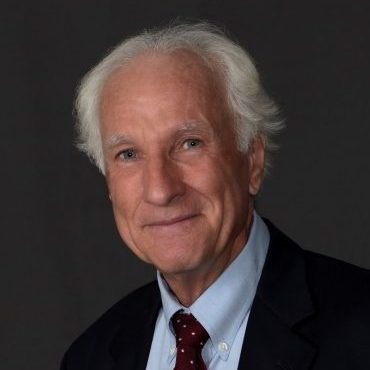“The Administration needs to move quickly to convince stakeholders in the public and private sectors that the new Executive Order will be implemented as its wording implies. That requires strong leadership to keep agencies from wandering off the track.”
 On Friday, July 28, President Biden announced a new Executive Order titled “Federal Research and Development in Support of Domestic Manufacturing and United States Jobs.” Rumors that the Administration was considering extending the deeply flawed Department of Energy (DOE) policy (see “More DOE Bureaucracy Equals Less Innovation” to all agencies had been swirling for months. Luckily, the new Executive Order doesn’t do that, but how it will be applied is subject to a convoluted interagency process, so it will be months before we see if it’s meeting its intended goal or not.
On Friday, July 28, President Biden announced a new Executive Order titled “Federal Research and Development in Support of Domestic Manufacturing and United States Jobs.” Rumors that the Administration was considering extending the deeply flawed Department of Energy (DOE) policy (see “More DOE Bureaucracy Equals Less Innovation” to all agencies had been swirling for months. Luckily, the new Executive Order doesn’t do that, but how it will be applied is subject to a convoluted interagency process, so it will be months before we see if it’s meeting its intended goal or not.
The crux of the problem is that in all too many cases, domestic manufacturers simply can’t be found. That’s not something which can be fixed by Executive Order. What we don’t want is an approach that puts more burdens on those seeking to license federally funded inventions or their prospective licensees, because the fault isn’t theirs. So, it’s reassuring that the new Order instructs the head of each agency to consult with outside stakeholders, including the industrial partners, academic institutions and others who will be directly affected by its provisions.
Good on Paper
The objective of the Executive Order (EO) is laudable: “Therefore, it is the policy of my Administration that when new technologies and products are developed with support from the United States Government, they will be manufactured in the United States whenever feasible and consistent with applicable law.”
It instructs the agencies to work with the Small Business Administration to support efforts to include small companies (which license about 70% of academic inventions) in their commercialization efforts. Agencies are encouraged to bolster their own technology transfer capabilities as well as creating a uniform invention reporting and tracking system so it’s clear how many federally funded inventions are being made domestically, while minimizing reporting requirements on contractors and grantees.
Agencies are instructed to identify critically important technologies vital to our economic and national security needs and whether new measures are needed to promote their domestic manufacturing.
Agencies are also required to develop processes for circumstances where the domestic manufacturing requirement can be automatically waived and are required to ensure that their waiver processes when domestic manufacturing isn’t feasible are “rigorous, timely, transparent and consistent.” Interagency guidelines will be developed to help applicants understand what factors are considered when weighing such requests. Agencies are required to consider limiting waivers for foreign manufacturing to countries that have market economies.
A requirement that bears watching is that agencies consider invoking Bayh-Dole’s “exceptional circumstance” provision to expand the domestic manufacturing requirement to non-exclusive licenses and licenses to sell products outside the United States.
Bayh-Dole requires a domestic manufacturing preference for exclusive licenses for the U.S. market. DOE opted to invoke the exceptional circumstances clause to cover the entire agency so it could include all licenses in the domestic manufacturing provision. The result is increased headquarters micro-management of its laboratories and universities receiving DOE grants—the exact opposite goal of Bayh-Dole.
Practically, it makes little sense to include non-exclusive licenses or those solely for foreign markets in the domestic manufacturing requirement. Requiring someone non-exclusively licensing a mundane technology that will never be a discrete product to develop a commercialization plan or a technology which has no sales potential in the United States but might work in Bangladesh makes little sense. That only makes the process unduly burdensome and is more likely to cause companies to walk away than to broaden our manufacturing base.
Exceptional circumstances should be just that: specific programs where deviations from the law can be justified to promote commercialization. Hopefully, that is how this provision of the Executive Order will be used by the other agencies. But that warrants close scrutiny.
Still Fighting Misconceptions
So, what does all this mean? One place to start is by addressing some fundamental misconceptions about the Bayh-Dole system. The very well written White House Fact Sheet includes one clearly wrong assumption: “The Federal Government has historically faced challenges when tracking the lifecycle of technologies developed and commercialized through Federal R&D investment.”(emphasis added).
The government is normally funding early stage research producing inventions more like ideas than products. Industry pays for their development and commercialization at great expense—and risk. And most often that is done by small companies. The genius of Bayh-Dole is that it provides the incentives and authorities spurring the private sector to do so. But the system is delicately balanced.
While not reflected in the Executive Order, several other fundamental misconceptions should also be dismissed, including:
- More federally funded inventions would be made in the U.S. if only universities, federal labs, and potential licensees tried harder.
- Companies are lined up to bid on licenses.
- Licensees get a special benefit from developing federally funded inventions so adding more process and delays to the system doesn’t matter.
More inventions aren’t being made here for a simple reason. All too often, domestic manufacturers can’t be found. One thing missing in the Executive Order is providing assistance to locate U.S. manufacturers. Currently, that burden is placed on the shoulders of academic and federal lab licensing offices and potential licensees, who are all too often sent seeking something which simply isn’t there. That’s the real problem.
“Bringing Manufacturing Back to the U.S. is Easier Said than Done” in Harvard Business Review succinctly summarized the difficulty often confronted in finding domestic manufacturers:
“The days are long gone when a single vertically-integrated manufacturer like Ford or General Motors could design and manufacture all or most of the subassemblies and components it needs to make a finished product. Technology is just too complicated, and it is impossible to possess all the skills that are necessary in just one place. Consequently, manufacturers have turned to specialists and subcontractors who narrowly focus on just one area — and even those specialists have to rely on many others. And just as the world has come to rely on different regions for natural resources like iron ore or lithium metal, so too has it become dependent on regions where these specialists reside.”
If that’s true for existing products, how much harder is it to find a U.S. manufacturer for something which won’t be ready for production for years? That’s often the case with federally funded inventions. And when a domestic manufacturer can’t be found, potential licensees are cast into the abyss of the agency waiver process.
Recently, AUTM (which represents the academic licensing community) surveyed its members on how this process works. The vast majority of the time agencies fail to respond to waiver petitions at all. That broken process could be buried under many more waiver requests if agencies copy the DOE model extending the domestic manufacturing requirement to non-exclusive licenses and licenses for foreign sales. It’s good to see that the Executive Order recognizes the problem. The White House Fact sheet says a goal is making the waiver process “clearer, timelier, and more consistent, including when production is not commercially feasible” (emphasis in original). It adds that decisions will be made “as soon as possible.” Serious reform would mandate a certain time when agencies must decide. How about if a waiver request that has met the criteria is automatically approved unless the agency objects within two to three weeks? That would put some teeth into the system.
Getting it Right
A major reason for the tremendous impact of Bayh-Dole is that for 43 years it provided certainty about how the system operates, which is crucial to assure companies making major risks in their time and money needed to turn a federally funded invention into a product. The Administration needs to move quickly to convince stakeholders in the public and private sectors that the new Executive Order will be implemented as its wording implies. That requires strong leadership to keep agencies from wandering off the track.
The bottom line is that we need to make federally funded inventions here whenever possible. However, when that’s not feasible, it’s better that they be made somewhere than that they remain on the shelf. On paper, the Executive Order strikes that balance.
But as the saying goes “the devil’s in the details.” There’s a lot of work to be done. Let’s hope the agencies move at industry speed. There’s too much at stake for business as usual.
Image Source: Deposit Photos
Author: [email protected]
Image ID: 130159518

![[IPWatchdog Logo]](https://ipwatchdog.com/wp-content/themes/IPWatchdog%20-%202023/assets/images/temp/logo-small@2x.png)

![[Advertisement]](https://ipwatchdog.com/wp-content/uploads/2024/05/Artificial-Intelligence-2024-Getting-AI-Patents-Allowed-sidebar-700x500-1.jpeg)
![[Advertisement]](https://ipwatchdog.com/wp-content/uploads/2024/05/Patent-Portfolio-Management-2024-sidebar-early-bird-larger-700x500-1.jpg)

![[Advertisement]](https://ipwatchdog.com/wp-content/uploads/2021/12/WEBINAR-336-x-280-px.png)
![[Advertisement]](https://ipwatchdog.com/wp-content/uploads/2021/12/2021-Patent-Practice-on-Demand-recorded-Feb-2021-336-x-280.jpg)
![[Advertisement]](https://ipwatchdog.com/wp-content/uploads/2021/12/Ad-4-The-Invent-Patent-System™.png)






Join the Discussion
One comment so far.
Anon
July 31, 2023 08:51 amI would be curious if the author has heard of Peter Zeihan, who has a long-standing series of podcasts on the evolving nature of world-wide concerns including the well-established trend of repatriating manufacturing BACK INTO the US (and not just by US and Transnational concerns, but also by the likes of corporations of Korean and Japanese nature, due to their demographics).